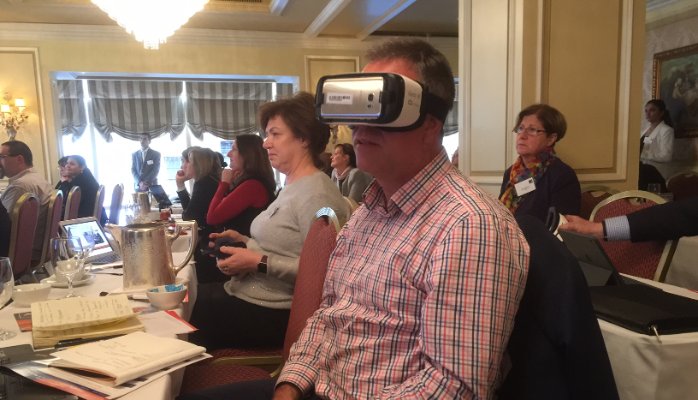Written by Paul Whybrow
The future of Education is always a hot topic anywhere in the globe, as we universally want the best for the next generation. As I get older, I see a rapidly growing gap between how I learnt at school and at University, and what the current working world expects.
Recently, I was on a speaking panel for a conference about Emerging Trends in Learning and Working tackling the practical impacts of the digital disruption starting to hit the Education sector.
Greg Prior from NSW Education, drove the point that literacy and numeracy are still a fundamental core. Collaboration and personalised learning is emerging as a key approach and governments will allow students to progressively take leadership of their own learning. As he commented, the shift will be from ‘Bring your own device (BYOD) to create your own school’. In NSW they have put this to the test with a Virtual High School – Aurora College, where top performers can be stretched by participating in virtual extension lessons, whilst remaining in their current high school.
We got a glimpse of Artificial Intelligence in University life from Sharon Kerr, with the University of Edinburgh Teacherbot. This use of AI tweeted students 1,500 times during the course with advice and pointers. Many students apparently didn’t realise they were being helped by a computer with the nickname Botty. An extra upside of an AI teacher is that it has no inbuilt issues for disadvantaged or disabled students. Sharon said that with up to 20% of students in this category, this could be a big positive impact for these students.
Ritchie Djamur from retailer Bing Lee, brought AI, AR, VR, and mixed reality to life. It was great to see demos on how these could be used in the classroom of the not so distant future. Whether zipping around Jupiter in a space craft, overcoming the fear of heights, being immersed in a 360 degree video of ancient Rome or being dropped in a refugee camp to experience that life first hand. It is pretty exciting to see how this can creatively extend the physical and emotional learning experience.
David Barnett the MD of Education publisher Pearson, was keen to remind us that despite all the opportunities that can come through emerging technology it should be remembered that “technology is the enabler not the centre piece”. There have been many smart boards and iPads delivered to education facilities, and the adoption has not been as clear cut or positive as hoped. He explained that it isimportant to embrace Intelligent Technology but remember, that as AI and VR extends to education and lifelong learning, then we need to be more human centric as we use the technology revolution not less so.
Raju Varanasi of Catholic Education Parramatta, has brought to life the data and analytics of the education system. He demonstrated how a number of live snapshots could access attendance, geographical info, education marks and much more. This allows teachers and leaders at school and area level the ability to slice, dice and analyse. They can manage better and get terrific understandings that can deal with issues ranging from the best location for a swimming carnival, to warning signs of absent kids, to focussing support to improve educational outcomes. It is so simple to use that it has become the Pokemon Go for educators. As he says, “data is not to store it is to flow”.
For me there were a few key takeaways:
- In education and learning, technology is clearly driving dramatic change, however education needs to lead the charge not technologists, as improved learning is the core outcome everyone needs.
- Personalised education coupled with lifelong learning is opening new ways to educate, give credentials and give value to what is learnt.
- Mobility coupled with gamification and VR/AI and mixed reality could dramatically change the learning experience, although there will need to be economic models to give scale.
- Understanding your students at an individual and collective level through data and analytics will become the norm.
- The changes in technology and education delivery can continue the ability for widening education opportunity to all. Access to mobility and the high speed internet, could give access to everything.
So as my son patiently instructs his 50+ dad on how to catch a Pokemon on my phone, I can see similarities to the emerging education world. The ability to mix gamification, nostalgia, deep data and analytics, augmented reality, geo location, and physical exercise all into a game, could give some idea of how the personalised lifelong learning experience of the future could be for us all.
Written by Paul Whybrow





